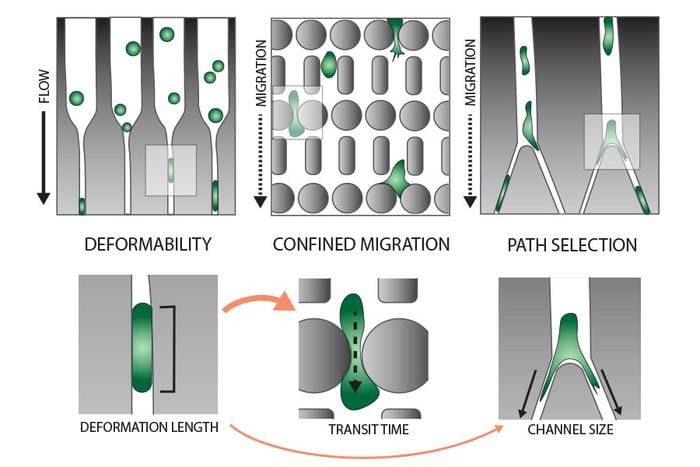Study reveals how cancer cells penetrate narrow tissue crevices
Researchers at Delft University of Technology and the Kavli Institute of Nanoscience have investigated in a study how aggressive cancer cells overcome narrow tissue clefts to form metastases. The results show that fibrosarcoma cells are more flexible than melanoma cells ŌĆö and move more efficiently through narrow crevices.

The study compared the metastatic cancer lines MV3 (melanoma) and HT1080 (fibrosarcoma). While both cell types achieve similar movement results, fibrosarcoma cells use their higher deformability to squeeze through narrow tissue gaps. Two microfluidic devices have been developed: one to measure cell deformability, the other to analyze the speed of movement. The results confirmed that fibrosarcoma cells migrate faster and more efficiently through narrow clefts without affecting their direction of movement.
For the first time, the research shows a direct link between the deformability of cancer cells and their ability to penetrate narrow areas of tissue. It provides new insights into the spread strategies of cancer cells and could promote the development of diagnostics and therapies that use the mechanical properties of cancer cells to predict treatment success or prognosis.
Original Paper:
Editor: X-Press Journalistenb├╝ro GbR
Gender Notice. The personal designations used in this text always refer equally to female, male and diverse persons. Double/triple naming and gendered designations are used for better readability. ected.




